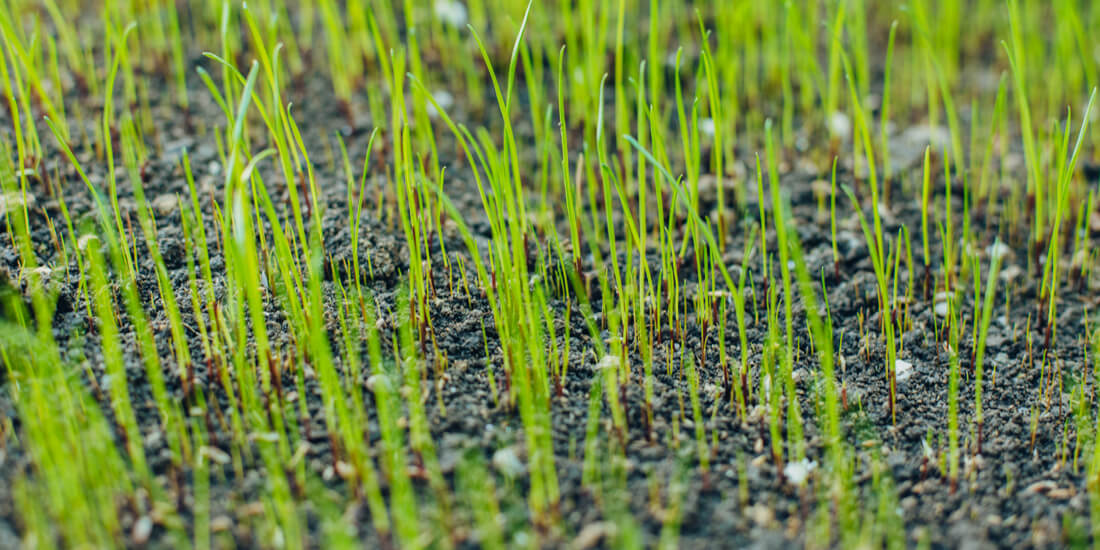Can I sow grass seed now?

With a lot of us setting a bit more time aside to spend at home, home improvements and DIY are top of a lot of people's to-do lists. For those of us wanting to get our lawn back into great shape is no different, but is it warm enough to sow grass seed yet?
The answer to this question is yes. You can successfully sow grass seed at any time of the year, but it is best done in the months between spring and late autumn.
When can I sow grass seed?
The best time to sow grass seed is when temperatures are 8-10 degrees and above consistently for two weeks with no adverse weather conditions on your local weather forecast (no snow, frost, storms or floods). Hopefully, we are past that by now (but you never quite know with UK weather!) - for this reason, it's best to always consult a 2-week forecast before planning to sow grass seed.
Also, be aware of nighttime temperatures dropping; if they should drop to maybe 6/7 degrees, germination will still proceed, but if they are dropping to lower than this and even minus temperatures, then it's still not warm enough to seed.
Sowing grass seed in spring
Sowing in spring brings the perfect combination of warmth, sunshine and rainfall - with the added fun of getting out in the garden and starting your annual gardening routines. Sowing your grass seed in spring also means your lawn will be fully established and ready to enjoy come summer, meaning you can sit back and relax when our UK weather is at its best!
Sowing your grass seeds in autumn
Seeding in autumn is also a great option due to the lower chance of weeds causing problems and the added benefit of a greater chance of rainfall to keep your soil moist. Seeding at this time of year promotes a focus on root development as opposed to leaf growth. This ensures that your lawn is well-established and growing strong for the coming year.
Prepare your lawn for sowing grass seed
Knowing what seeds you need and what soil type your garden has will help ensure you get the most when sowing grass seed this time of year. Whether you're sowing a new lawn or overseeding an existing lawn, knowing the ins and outs of sowing grass seed will help revitalise your garden faster and with better results.
Before planning to sow and waiting for temperatures to warm up, you should ensure that your existing lawn is ready to be overseeded. Likewise, if you're sowing a new lawn from scratch, be sure that your seedbed is prepared to perfection.
Overseeding an existing lawn
- Remove dead grass, weeds or moss by scarifying/raking the area. If weeds and moss are present throughout the lawn, you may wish to consider a Feed, Weed and Moss Killer product.
- Rake the area enough so that the soil is loose
- Leave the area to settle for 10-14 days; this will encourage any pesky weeds to show their faces. These can then be removed by hand before sowing
- Sow the seed at our recommended rate of 35g per m2 by using a seed spreader or your hand
- Rake the seed in after sowing so that the seed is in amongst the soil
- Firm down by foot or by using a roller to improve seed-to-soil contact
- Water well
Sowing a new lawn
- Dig the soil over to a depth of 20-25cm
- Remove weeds by hand or use a weed killer.
- Add topsoil if you believe the soil to be poor quality
- Consider applying a QUICK RELEASE: Pre-Seed fertiliser to get nutrients into the soil
- Rake the area to get a level seedbed
- Leave the area to settle for 10-14 days; this will encourage any pesky weeds to show their faces. These can then be removed by hand before sowing
- Sow the seed at our recommended rate of 50g per m2, by using a seed spreader or your hand
- Rake the seed in after sowing so that the seed is in amongst the soil
- Firm down by foot or by using a roller to improve seed-to-soil contact
- Water well
If you would like additional information, we have blog posts further reading on how long it takes grass to grow and when you should first mow your lawn.